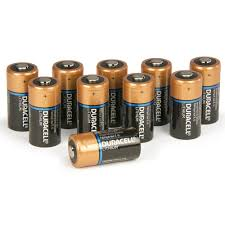K
Krish Gupta
Daniella Garcia-Loos
AP Physics 2 🧲
61 resourcesSee Units
Electric Systems
In a general physics course, there are 2 broad topics that you cover: Mechanics and Electromagnetism.
In between, or in other classes, you might also learn about thermodynamics, fluids, sound, waves, optics, modern physics, etc.
In AP Physics 1, you might have learned a lot about mechanics with special topics including waves, sound, and basic modern physics.
In AP Physics 2, you're supposed to learn a lot about electromagnetism along with fluids, thermodynamics, optics, and modern physics. Electromagnetism is an incredibly important topic in Physics. That's why we will break it down and learn about it in 3 units: electricity, circuits, and magnetism.
You have mostly dealt with mass, a fundamental property of matter. Now we deal with charge, another fundamental property of things.
When learning mechanics, your focus is usually on the bigger picture and macroscopic phenomena. When shifting to electricity we will learn and inspect processes at a smaller or more microscopic scale than you're used to!

We will even learn how everyday objects like batteries work!
The AP Physics 2 writers really want you to know the difference between a system and an object. So even though we have gone through it several times, let's go through it again. An object does not have an incredibly precise definition but can be generalized as a collection of matter. A system then can be said to be a collection of objects.
Since objects make up systems, the properties of the objects determine the behavior of the system. These properties refer to the internal structure of the system. The internal structure plays a much bigger role when discussing the physics of fluids than it does with solids.
In some cases, the internal structure of the system is not extremely important to the macroscopic behavior of a certain model. In such a case the system itself can be thought of as an object.
Here are some key differences between an object and a system in physics:
- An object is a physical entity that can be described and studied in terms of its properties, such as mass, volume, and density. An object can be a single physical entity, or it can be made up of multiple physical entities.
- A system is a group of objects that are being studied or analyzed as a whole. A system is often defined by its boundaries, which can be physical or conceptual. The objects within a system interact with each other and with their surroundings, and the behavior of the system as a whole can be analyzed using various physical principles and laws.
- An object is typically studied in isolation, while a system is studied in the context of its interactions with its surroundings. For example, an object might be studied to understand its properties and behavior, while a system might be studied to understand how the objects within the system interact and exchange energy with each other and with their surroundings.
- An object is typically described in terms of its physical properties and behavior, while a system is often described in terms of the interactions and exchanges of energy and matter between the objects within the system.
- The study of an object is typically focused on understanding the object itself, while the study of a system is often focused on understanding the relationships and interactions between the objects within the system and how they influence the behavior of the system as a whole.
Let’s try to look at an example. Let’s say we have a balloon filled with some gas. The objects in this example would be the gas in the balloon and the balloon itself. The gas-balloon entity would be our system. If we were trying to just model the general behavior of the system, for example finding the temperature of the system, we could just say that our system - the balloon-gas combination - is our object.
Some of the systems and objects you'll likely encounter in this unit includes: point charges (almost like atoms) and charges or uncharged spheres.
Here are some examples of electric systems and objects:
- Electric circuits: An electric circuit is a system that consists of a closed loop of electric components that allow electricity to flow through it. Examples of electric circuits include household circuits, car electrical systems, and computer circuits.
- Electric generators: An electric generator is an object that converts mechanical energy into electrical energy. Examples of electric generators include hydroelectric generators, wind turbines, and gasoline generators.
- Electric motors: An electric motor is an object that converts electrical energy into mechanical energy. Examples of electric motors include car engines, washing machine motors, and fan motors.
- Batteries: A battery is an object that stores electrical energy and can be used to power electrical devices. Examples of batteries include alkaline batteries, lithium-ion batteries, and nickel-cadmium batteries.
- Electric charges: An electric charge is a property of an object that is associated with the presence of electric charge. Examples of objects that can be charged electrically include electrons, protons, and ions.
- Electric fields: An electric field is a region of space in which an electric charge experiences a force. Examples of electric fields include the field around a charged object and the field between two charged plates.
- Electric potential: Electric potential is a measure of the potential energy of an electric charge within an electric field. Examples of electric potential include voltage and electric potential energy.
Browse Study Guides By Unit
💧Unit 1 – Fluids
🔥Unit 2 – Thermodynamics
⚡️Unit 3 – Electric Force, Field, & Potential
💡Unit 4 – Electric Circuits
🧲Unit 5 – Magnetism & Electromagnetic Induction
🔍Unit 6 – Geometric & Physical Optics
⚛️Unit 7 – Quantum, Atomic, & Nuclear Physics
📆Big Reviews: Finals & Exam Prep
📚Study Tools

Fiveable
Resources
© 2025 Fiveable Inc. All rights reserved.